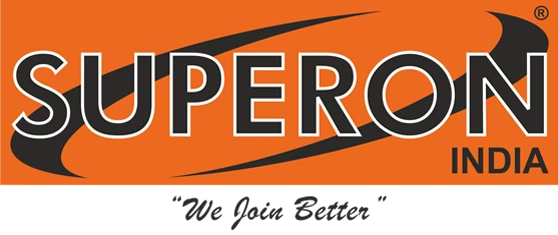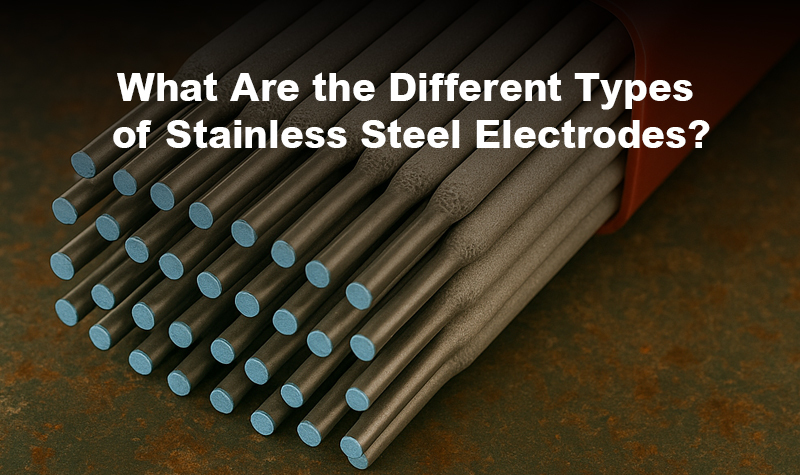Welding stainless steel is a cornerstone of many industries such as petrochemicals, energy, construction, and shipbuilding, because no other material can surpass its relative strength, corrosion resistance, and long-term durability. All of which would not be possible without the correct welding electrode.
The following article will discuss the numerous stainless steel electrode types alongside their chemical composition and particular industrial applications. Working as a welder or manufacturer or serving heavy industries will find in this comprehensive resource valuable intelligence to achieve permanent reliable welds of exceptional quality.
Why Stainless Steel Welding Needs the Right Electrodes?
Welding stainless steel operates dissimilarly to welding mild steel. The process requires extreme heat along with potential intergranular corrosion while bringing technical difficulties to the materials. The selection process for stainless steel electrodes needs to be taken seriously since this choice makes all the difference. A suitable electrode provides welds with enhanced mechanical performance while fighting against corrosion and minimizing cracking while providing structural integrity during challenging usage conditions.
Superon Technik operates as a top stainless steel welding manufacturer that provides specialized electrodes for multiple industrial uses.
Understanding the Types of Stainless Steel
Before we proceed to the electrode types, let’s discuss the fundamental stainless steel classifications.
Austenitic Stainless Steel
These stainless steels represent the most popular group of stainless steel compositions. The commercial stainless grades 304 and 316 possess outstanding resistance to corrosion together with excellent weldability and non-magnetic behavior. The material finds use throughout food processing as well in pharmaceutical industries and in architectural projects.
Ferritic Stainless Steel
Steel variant 430 functions between regular corrosion resistance and shows magnetic properties. Exhaust systems in automobiles often incorporate these materials in their manufacturing process.
Martensitic Stainless Steel
Their key features include superior strength together with high hardness characteristics. The turbine blade and surgical instrument industry relies heavily on 410 stainless steel as one prime illustration.
Duplex Stainless Steel
Duplex encompasses both austenitic and ferritic grades; consequently, you achieve the benefits both grades offer. Duplex steels possess a combination quality that delivers good to higher strengths and are resistant to stress corrosion cracking. Duplex steels are mostly used in the oil & gas and chemical industries.
Range of Superon Technik Stainless Steel Electrodes
Now, let’s look at the most well-known stainless steel electrodes, a few of their characteristics and their best use.
SUPER OPTIMAL 307-15
Best for: welding dissimilar metals.
The super optimal 307-15 electrode is made specifically for welding stainless steel to mild steel or other alloys. It has high tensile strength, is good for crack resistance, and works best when mixed with associated materials in a complex fabrication application. It is best utilized in this fashion.
SUPER OPTIMAL 308L-15
Best for: 304/304L stainless steel
Best for: Stainless to carbon steel.
This is the standard electrode for welding similar or dissimilar metals. Super Optimal 309L-15 is good for different service conditions. You can expect the 309L-15 electrode to achieve a corrosion resistant weld when bonding stainless to carbon steel.
SUPER OPTIMAL 310
Best for: High-temperature applications
The electrochemical makeup of this electrode includes 25% Chromium together with 20% Nickel which makes it the perfect choice for heat-resistant stainless steel applications. The electrode demonstrates high temperature resistance and oxidation protection which makes it work excellently for furnace applications and boiler tubes.
SUPER OPTIMAL 312
Best for: General maintenance and repair
The distinctive chemical breakdown of 312 allows welders to perform routine as well as extensive maintenance tasks. The electrode excels at challenging welding tasks and shows outstanding results while preventing undercutting.
SUPER OPTIMAL 316L-15
Best for: Molybdenum-bearing stainless steels
The low-carbon SUPER OPTIMAL 316L-15 electrode functions best when welding 316 and 316L stainless steels. The material shows outstanding performance against pitting corrosion and crevice corrosion breakdown in marine conditions which contain high chloride levels.
SUPER OPTIMAL 317L
Best for: Corrosive environments
The welding industry uses 317L electrodes because it maintains optimal performance within acidic and chemical solutions. The combination of low carbon content with resistance to chemical corrosion makes the electrode optimal for joining 317 and 317L stainless steel.
SUPER OPTIMAL 318
Best for: Preventing intergranular corrosion
Users can prevent carbides from forming at grain boundaries through the use of niobium-stabilized electrode 318. The stainless steel's strength and mechanical properties together with its metal integrity remain protected through high-temperature exposure because of this admixture.
SUPER OPTIMAL 347-15
Best for: Welding stabilized stainless steels.
The SUPER OPTIMAL 321 electrode enables welding of both 321 and 555 stainless steel. The niobium present in this metal structure blocks carbide crystal development that guards the material from intergranular corrosion attacks. Ideal for aerospace and high-pressure applications.
SUPER OPTIMAL 385
Best for: 904L steel alloy
The 385 electrode enables welding of 904L stainless steel because it contains high Nickel Molybdenum and Chromium compositions. This material stands out because it protects well against corrosion which occurs in sulfuric and phosphoric acid solutions.
SUPER OPTIMAL 2209-15
Best for: Duplex steel (Grade 2205)
2209-15 offers a balanced microstructure of austenite and ferrite. This balance enhances strength and increases resistance to stress corrosion cracking. Used widely in gas pipelines, desalination plants, and pressure vessels.
SUPER OPTIMAL 2594-15
Best for: Martensitic stainless steel (AISI 410)
This electrode has high tensile strength and excellent resistance to pitting and crevice corrosion, especially in seawater and acidic conditions. It’s ideal for the chemical and petrochemical sectors.
SUPER OPTIMAL 410-15
Best for: Martensitic stainless steel (AISI 410)
These are low hydrogen MMA electrodes suitable for welding martensitic chromium steels. Preheating and post-weld stress relieving are recommended to ensure ductility and reduce the risk of cracking.
SUPER OPTIMAL 430-15
Best for: Ferritic stainless steel
430-15 is designed for welding ferritic stainless steel with improved oxidation resistance. It prevents nitrogen loss from the weld zone and is ideal for environments where air humidity affects the weld performance.
SUPER OPTIMAL 316L
Best for: Smooth welds and simple post-process handling.
Rotile electrodes containing molybdenum exist to weld pieces of 316L steel. This electrode produces. welds with no spatter and easy slag removal using minimal effort to bring out superior bead quality
Selecting the right electrode: What to think about
When choosing a stainless-steel electrode, consider:
Base metal type: You need to consider the method of selection of the electrode based on the grade of stainless steel used. When using "Austenitic, Ferritic, Martensitic or Duplex Steels" it is important that you use the correct filler material.
Corrosion resistance: It is important to choose the electrode that has Mo, Ni, or Cr, where appropriate, for corrosive environments such as marine, chemical plants, or food processing.
Mechanical strength: When looking for electrodes used within or around turbine blades, in pressure vessels or other applications that involve high stresses and elevated temperatures. These will need mechanical property approval to withstand the temperature issue.
Welding position: Electrodes are used when welding out of position; while some electrodes are tailored to be used in the flat position others may provide "all positional welding" based on your project specification which will determine the correct choice.
Environmental conditions: Humidity, chlorine or heat can result in failure of the weld. The environment can affect the weld and when exposed appropriate electrodes can be used.
Final Thoughts
Selecting a stainless steel electrode requires more than rod selection since it affects both product security and operational strength together with performance output. Specialized stainless steel electrodes exist for every scenario including connector work between different metals and resistance to heat exposure and material degradation.
The diverse selection of stainless steel electrodes at Superon Technik gives their products prime positioning as an industry-wide welder solution. The electrode products come with intended applications to ensure every challenge has an available effective solution. You can find the right stainless steel electrodes with high performance and long life along with international reliability at Superon Technik's starting point.
Also Read: Arc welding vs. gas welding: the bottom line

